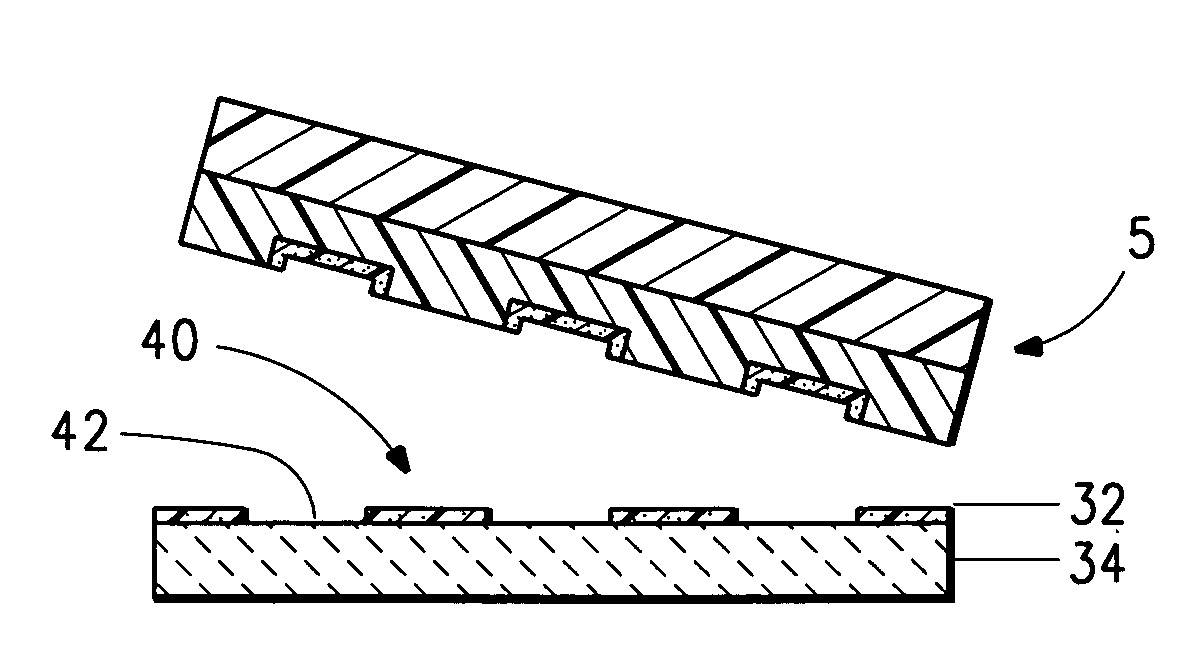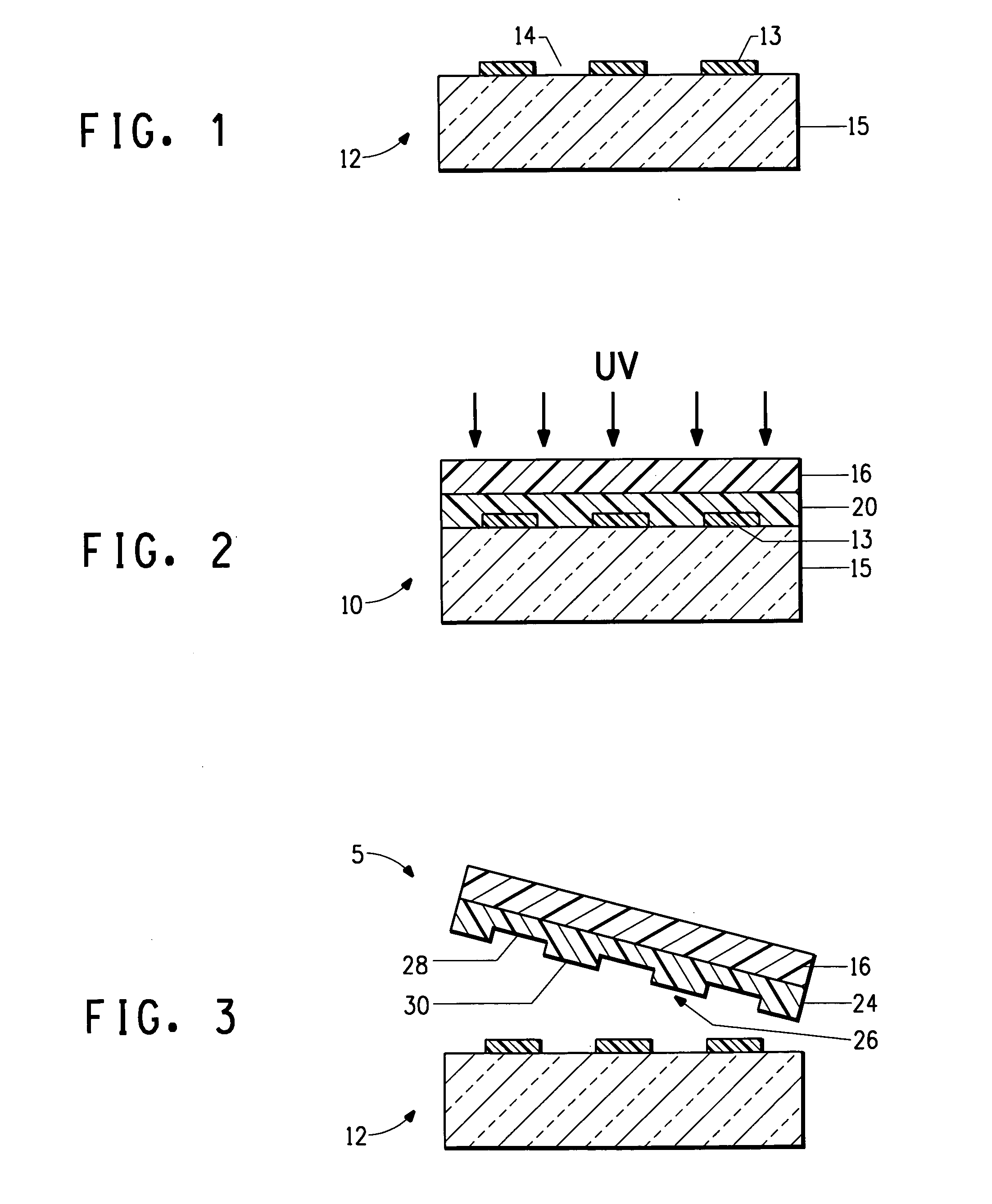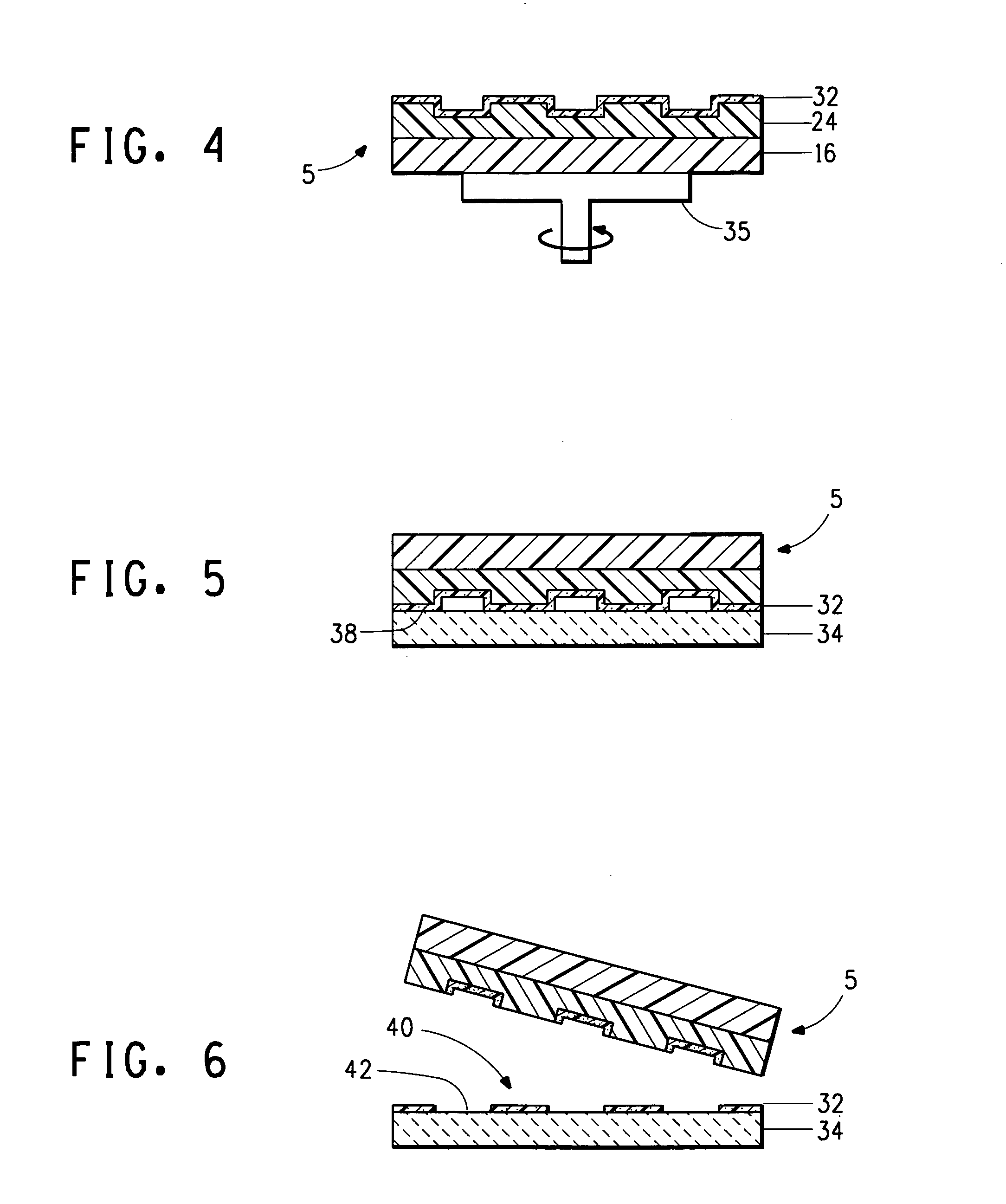Method to form a pattern of functional material on a substrate
- Summary
- Abstract
- Description
- Claims
- Application Information
AI Technical Summary
Benefits of technology
Problems solved by technology
Method used
Image
Examples
example 1
[0064]The following example demonstrates printing of a light emitting polymer (LEP) onto a substrate with a printing stamp made of polyfluoropolyether (PFPE).
Printing Stamp Preparation
Master Preparation:
[0065]A 1.5 micrometer thick layer of a negative photoresist, SU-8 type 2 (from MicroChem, Newton, Mass.) was coated onto a silicon wafer at 3000 rpm for 60 sec. The wafer with the coated photoresist film was heated 65° C. for 1 minute and then baked at 95° C. for 1 minute to fully dry the film. The baked film was then exposed for 12 sec in I-liner (OAI Mask Aligner, Model 200) at 365 nm through a mask having a pattern of lines and spaces and squares with dimensions varying from 1 to 5 micron, and post-baked at 65° C. for 1 min. After a final bake at 95° C. for 1 minute the exposed photoresist was developed in SU-8 developer for 1 minute and washed with isopropyl alcohol. The developed film was dried with nitrogen and formed a pattern on the wafer, which was used as a master for the ...
example 2
[0081]The following example demonstrates printing of another light emitting polymer (LEP) onto a substrate with a printing stamp made of PFPE.
[0082]The master and the PFPE stamp were prepared as described in Example 1.
Printing of LEP on Substrate:
[0083]The LEP solution was OC1-C10 which is a poly(p-phenylenevinylene) derivative from Hoechst, and has the following structure.
[0084]A 0.5% by weight solution of the OC1-C10 in THF / toluene (50 / 50 v / v) was prepared and maintained in a nitrogen dry box. The solution was spun coated onto the relief surface of the PFPE stamp at 4500 rpm in a dry nitrogen atmosphere to coat and dry the OC1-C10 as a layer on the stamp.
[0085]The substrate used was the same as the substrate described in Example 1. The OC1-C10 on the uppermost surface of the raised portions of the PFPE was printed by contact transfer onto the ITO surface of the substrate. The transfer was accomplished by placing the ITO substrate on hot plate maintained at 65° C. under a dry nitro...
example 3
[0086]The following example demonstrates printing of a dielectric material onto a substrate with a printing stamp made of PFPE.
[0087]The dielectric materials printed were Elvacite® 2042, a poly(ethyl methacrylate), and Elvacite® 2045, a poly(butyl methacrylate), both from Lucite International. The substrate was a silicon wafer having a layer of SiO2 that had a thickness of about 3000 Angstrom.
[0088]For both of the printed samples of Example 3, the master and the PFPE stamp were prepared as described in Example 1, except that a different PFPE compound having a molecular weight of about 1000, and a different photoinitiator were used.
[0089]The perfluoropolyether compound E10-DA was used as received and supplied by Sartomer as product type CN4000. The E10-DA has a structure according to the following Formula, wherein R and R′ are each an acrylate, E is a linear non-fluorinated hydrocarbon ether of (CH2CH2O)1-2CH2, and E′ is a linear hydrocarbon ether of (CF2CH2O(CH2CH2O)1-2, and having ...
PUM
| Property | Measurement | Unit |
|---|---|---|
| Temperature | aaaaa | aaaaa |
| Diameter | aaaaa | aaaaa |
| Mass | aaaaa | aaaaa |
Abstract
Description
Claims
Application Information
 Login to View More
Login to View More - R&D
- Intellectual Property
- Life Sciences
- Materials
- Tech Scout
- Unparalleled Data Quality
- Higher Quality Content
- 60% Fewer Hallucinations
Browse by: Latest US Patents, China's latest patents, Technical Efficacy Thesaurus, Application Domain, Technology Topic, Popular Technical Reports.
© 2025 PatSnap. All rights reserved.Legal|Privacy policy|Modern Slavery Act Transparency Statement|Sitemap|About US| Contact US: help@patsnap.com



